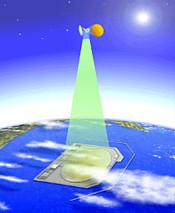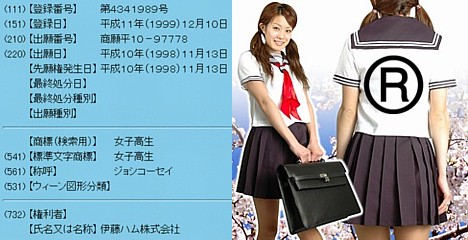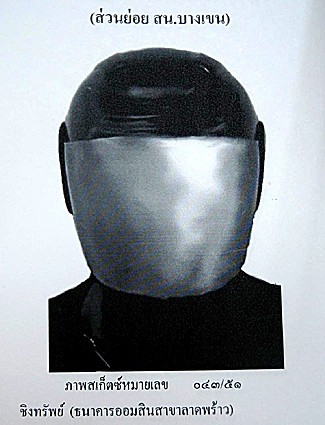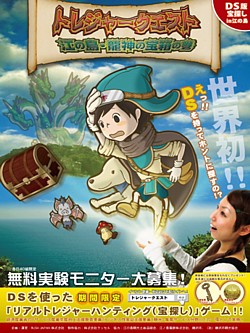
For decades, scientists have explored the possibility of using space-based solar cells to power the Earth. Some see orbiting power stations as a clean and stable energy source that promises to slow global warming, while others dismiss the idea as an expensive and impractical solution to the world's energy problems. While the discussion goes on, researchers at the Japan Aerospace Exploration Agency (JAXA) have begun to develop the hardware.
JAXA, which plans to have a Space Solar Power System (SSPS) up and running by 2030, envisions a system consisting of giant solar collectors in geostationary orbit 36,000 kilometers above the Earth?s surface. The satellites convert sunlight into powerful microwave (or laser) beams that are aimed at receiving stations on Earth, where they are converted into electricity.
On February 20, JAXA will take a step closer to the goal when they begin testing a microwave power transmission system designed to beam the power from the satellites to Earth. In a series of experiments to be conducted at the Taiki Multi-Purpose Aerospace Park in Hokkaido, the researchers will use a 2.4-meter-diameter transmission antenna to send a microwave beam over 50 meters to a rectenna (rectifying antenna) that converts the microwave energy into electricity and powers a household heater. The researchers expect these initial tests to provide valuable engineering data that will pave the way for JAXA to build larger, more powerful systems.
 JAXA says the orbiting solar arrays, which have the advantage of being able to collect energy around the clock regardless of the weather on the ground, will need to transmit microwaves through the earth's atmosphere at frequencies that are not affected by the weather. The researchers are now looking at using the 2.45GHz and 5.8GHz bands, which have been allocated for use with industrial, scientific and medical devices.
JAXA says the orbiting solar arrays, which have the advantage of being able to collect energy around the clock regardless of the weather on the ground, will need to transmit microwaves through the earth's atmosphere at frequencies that are not affected by the weather. The researchers are now looking at using the 2.45GHz and 5.8GHz bands, which have been allocated for use with industrial, scientific and medical devices.
JAXA ultimately aims to build ground receiving stations that measure about 3 kilometers across and that can produce 1 gigawatt (1 million kilowatts) of electricity -- enough to power approximately 500,000 homes.
[Source: Hokkaido Shimbun]



 On a small island near Tokyo, people armed with Nintendo DS portable game consoles are scouring the terrain in search of clues that will lead them to a secret treasure. The activity is part of a unique, virtual-meets-real-world game called "Treasure Quest: Enoshima - Treasure of the Dragon," which was developed by Rush Japan, a Tokyo-based company that specializes in planning treasure hunts and tourism-related events.
On a small island near Tokyo, people armed with Nintendo DS portable game consoles are scouring the terrain in search of clues that will lead them to a secret treasure. The activity is part of a unique, virtual-meets-real-world game called "Treasure Quest: Enoshima - Treasure of the Dragon," which was developed by Rush Japan, a Tokyo-based company that specializes in planning treasure hunts and tourism-related events.